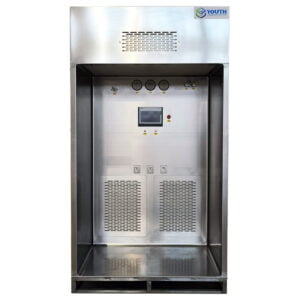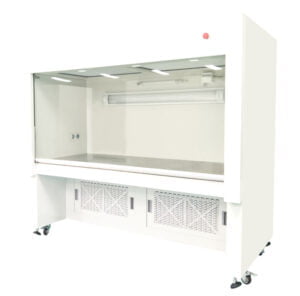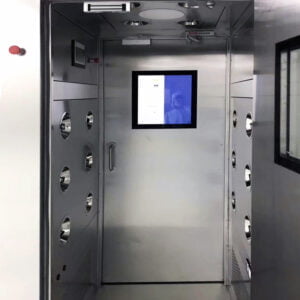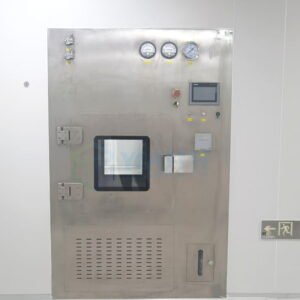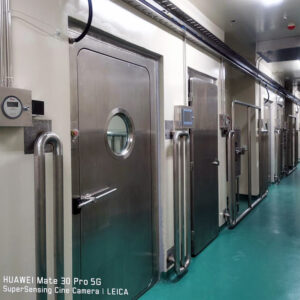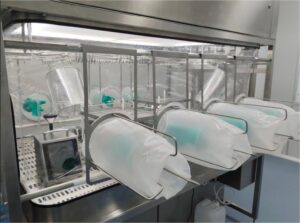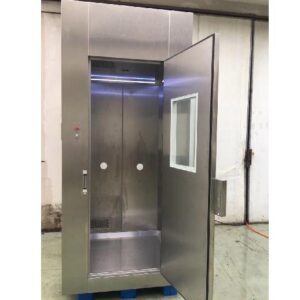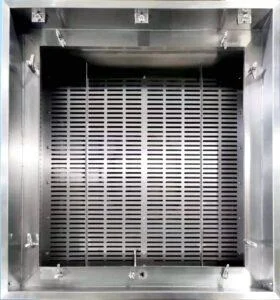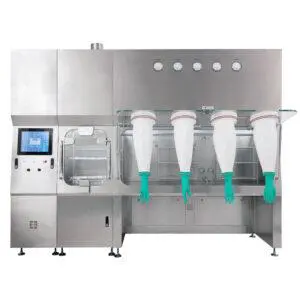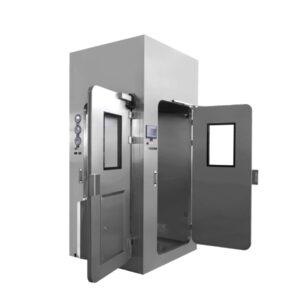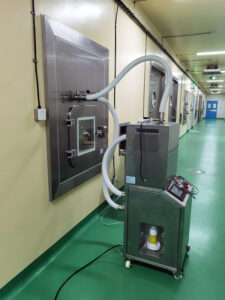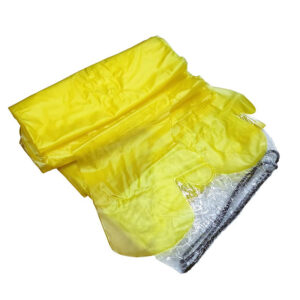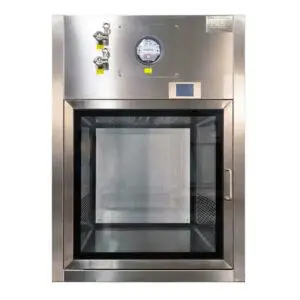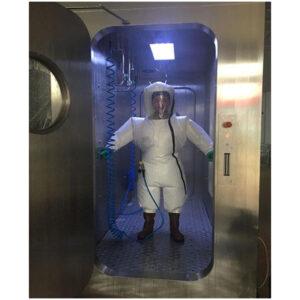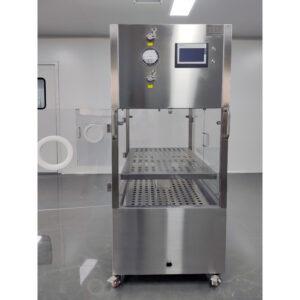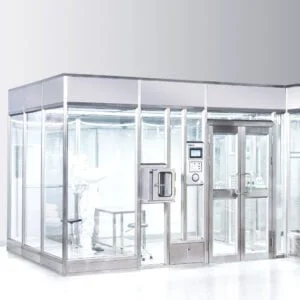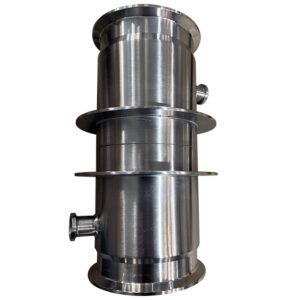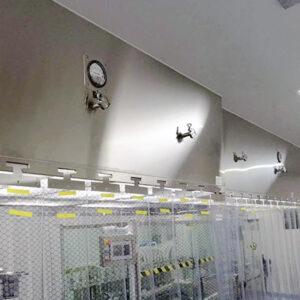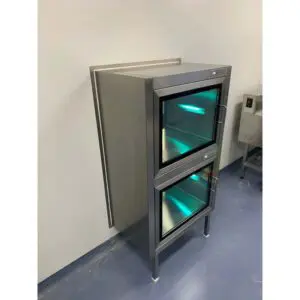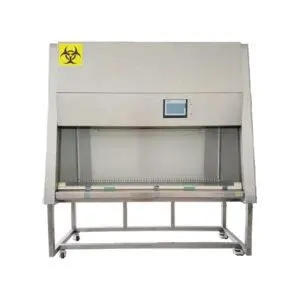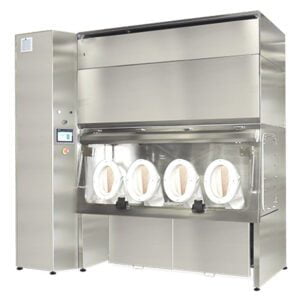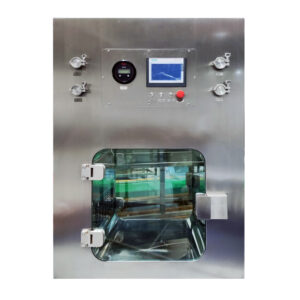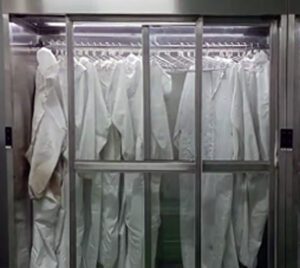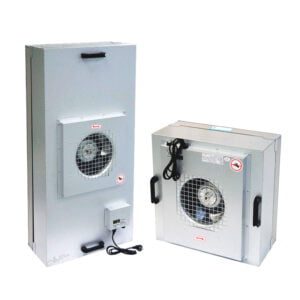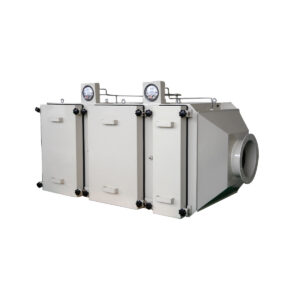The semiconductor industry is a rapidly evolving sector that demands precision, cleanliness, and efficiency at every step of the manufacturing process. One crucial aspect of maintaining these high standards is the use of Mobile Laminar Air Flow (LAF) Carts. These specialized pieces of equipment play a vital role in ensuring semiconductor clean transfers, a process that is essential for maintaining the integrity and quality of semiconductor components.
As we delve into the world of Mobile LAF Carts for the semiconductor industry, we'll explore their design, functionality, and the critical role they play in maintaining cleanroom environments. We'll also examine how these carts contribute to the overall efficiency and quality control in semiconductor manufacturing facilities.
Mobile LAF Carts are not just another piece of equipment in the cleanroom; they are a cornerstone of contamination control and product quality assurance. These carts provide a portable, controlled environment that allows for the safe transfer of sensitive materials and components within the manufacturing facility. By maintaining a laminar airflow, these carts effectively minimize the risk of particle contamination, ensuring that semiconductor components remain pristine throughout the production process.
As we transition into the main content of this guide, it's important to understand the significance of semiconductor clean transfers and how Mobile LAF Carts contribute to this critical process. We'll explore the various aspects of these carts, from their design features to their operational benefits, and discuss how they integrate into the broader context of semiconductor manufacturing.
Mobile LAF Carts are indispensable tools in semiconductor manufacturing, providing a controlled environment for the transfer of sensitive materials and components, thereby significantly reducing the risk of contamination and ensuring product quality.
What are Mobile LAF Carts and How Do They Function in Semiconductor Manufacturing?
Mobile LAF Carts are specialized pieces of equipment designed to provide a portable clean environment for handling and transferring sensitive semiconductor components. These carts utilize laminar airflow technology to create a uniform, unidirectional flow of filtered air, effectively sweeping away particles and maintaining a high level of cleanliness.
In semiconductor manufacturing, these carts serve as mobile cleanrooms, allowing for the safe transport of wafers, masks, and other critical components between different stages of the production process. The laminar airflow within the cart creates a protective barrier, preventing contamination from the surrounding environment.
The functionality of Mobile LAF Carts is based on the principle of laminar flow, where air moves in parallel layers without mixing. This controlled airflow pattern effectively sweeps particles away from the work area, maintaining a sterile environment for semiconductor components.
Mobile LAF Carts utilize HEPA or ULPA filters to remove 99.99% of particles 0.3 microns or larger, ensuring an ultra-clean environment for semiconductor components during transfer and handling processes.
| Feature | Description |
|---|---|
| Airflow Type | Laminar (Unidirectional) |
| Filter Type | HEPA or ULPA |
| Particle Removal | 99.99% of particles ≥0.3 microns |
| Mobility | Wheeled for easy transport |
| Material | Stainless steel or other non-shedding materials |
Mobile LAF Carts are an essential part of the semiconductor manufacturing ecosystem, providing a crucial link between different cleanroom zones and ensuring that the stringent cleanliness requirements are maintained throughout the production process. Their ability to create a controlled environment on-the-go makes them indispensable in modern semiconductor facilities where flexibility and efficiency are paramount.
Why are Semiconductor Clean Transfers Critical to the Manufacturing Process?
Semiconductor clean transfers are a crucial aspect of the manufacturing process, playing a pivotal role in maintaining the integrity and quality of semiconductor components. The importance of these transfers cannot be overstated, as even the smallest contaminant can render a semiconductor device useless.
In the world of semiconductor manufacturing, cleanliness is paramount. The microscopic scale of semiconductor components means that even particles invisible to the naked eye can cause significant damage. Clean transfers ensure that components move from one stage of production to another without picking up contaminants that could compromise their functionality.
The criticality of clean transfers stems from the nature of semiconductor devices themselves. These components are incredibly sensitive to environmental factors, and their performance can be severely impacted by the presence of particles, moisture, or other contaminants. Ensuring clean transfers throughout the manufacturing process is essential for maintaining yield rates and product quality.
Studies have shown that up to 80% of defects in semiconductor devices can be attributed to particle contamination, highlighting the critical importance of maintaining clean transfer processes throughout production.
| Contaminant Size | Potential Impact |
|---|---|
| <0.5 microns | Can cause short circuits |
| 0.5-5 microns | May lead to open circuits |
| >5 microns | Can cause physical damage to components |
The semiconductor industry's reliance on clean transfers has led to the development of sophisticated equipment like Mobile LAF Carts. These carts, along with other Semiconductor clean transfers solutions, ensure that the stringent cleanliness requirements are met at every stage of production. By maintaining a controlled environment during transfers, these tools help semiconductor manufacturers achieve higher yield rates, better product quality, and ultimately, a competitive edge in the market.
How Do Mobile LAF Carts Contribute to Contamination Control in Semiconductor Facilities?
Mobile LAF Carts play a crucial role in contamination control within semiconductor facilities. These specialized carts create a portable clean environment that effectively mitigates the risk of particle contamination during the transfer and handling of sensitive semiconductor components.
The primary function of Mobile LAF Carts in contamination control is to provide a consistent, unidirectional airflow that sweeps away particles and prevents them from settling on semiconductor components. This laminar airflow acts as a protective barrier, isolating the components from the surrounding environment and any potential contaminants.
In semiconductor facilities, contamination control is a constant challenge. Mobile LAF Carts address this challenge by offering a flexible solution that can be deployed wherever needed within the facility. Whether transferring wafers between process steps or transporting sensitive materials across different cleanroom zones, these carts ensure that the clean environment is maintained throughout the journey.
Mobile LAF Carts have been shown to reduce particle contamination by up to 99.99% during semiconductor transfers, significantly enhancing product quality and yield rates in manufacturing facilities.
| Contamination Control Feature | Benefit |
|---|---|
| HEPA/ULPA Filtration | Removes 99.99% of particles ≥0.3 microns |
| Laminar Airflow | Prevents particle settlement on components |
| Portable Design | Maintains cleanliness during transfers |
| Sealed Construction | Isolates components from external contaminants |
The contribution of Mobile LAF Carts to contamination control extends beyond just providing a clean environment. These carts also help in maintaining the overall cleanliness of the facility by preventing the spread of contaminants between different areas. By containing potential contaminants within the controlled environment of the cart, they minimize the risk of cross-contamination and help maintain the integrity of different cleanroom zones within the facility.
What Design Features Make Mobile LAF Carts Suitable for Semiconductor Applications?
Mobile LAF Carts designed for semiconductor applications incorporate several key features that make them particularly suitable for this demanding industry. These design elements ensure the carts can maintain the ultra-clean environment required for semiconductor manufacturing while also providing the flexibility and ease of use needed in a dynamic production setting.
One of the primary design features is the use of non-shedding materials in the construction of the cart. Stainless steel is often the material of choice due to its durability, resistance to corrosion, and ability to withstand rigorous cleaning procedures without degrading or releasing particles.
The airflow system is another critical design element. Mobile LAF Carts for semiconductor applications typically feature a top-mounted HEPA or ULPA filter that provides a uniform, downward laminar airflow. This design ensures that any particles are swept away from the work area, maintaining the cleanliness of the components being handled.
Advanced Mobile LAF Carts incorporate IoT sensors and real-time monitoring systems, allowing for continuous tracking of air quality, pressure differentials, and filter efficiency, ensuring optimal performance in semiconductor clean transfers.
| Design Feature | Purpose |
|---|---|
| Stainless Steel Construction | Durability and easy cleaning |
| HEPA/ULPA Filtration | Ultra-high particle removal efficiency |
| Vertical Laminar Airflow | Sweeps particles away from work area |
| Antistatic Properties | Prevents electrostatic discharge damage |
| Sealed Workspace | Isolates components from external environment |
The design of Mobile LAF Carts also takes into account the need for ergonomics and ease of use. Features such as adjustable height, easy-to-clean surfaces, and smooth-rolling casters ensure that these carts can be comfortably and efficiently operated by cleanroom personnel. Additionally, many carts are designed with modular components, allowing for customization to suit specific semiconductor manufacturing processes.
By incorporating these design features, Mobile LAF Carts provide a robust solution for maintaining cleanliness in semiconductor applications. They offer a perfect balance of contamination control, flexibility, and usability, making them an indispensable tool in modern semiconductor manufacturing facilities.
How Do Mobile LAF Carts Integrate with Other Cleanroom Equipment in Semiconductor Manufacturing?
The integration of Mobile LAF Carts with other cleanroom equipment is a crucial aspect of their functionality in semiconductor manufacturing. These carts are designed to work seamlessly within the broader ecosystem of cleanroom technology, enhancing the overall efficiency and contamination control of the manufacturing process.
One of the primary ways Mobile LAF Carts integrate with other equipment is through their compatibility with standard cleanroom transfer systems. Many carts are designed with standardized dimensions and interfaces that allow them to dock with load locks, pass-through chambers, and other transfer points within the cleanroom.
The integration extends to the environmental control systems as well. Mobile LAF Carts often feature monitoring systems that can communicate with the facility's central environmental control system, ensuring that the cart's internal environment aligns with the broader cleanroom parameters.
Integration of Mobile LAF Carts with automated guided vehicle (AGV) systems has been shown to reduce manual handling by up to 70% in some semiconductor facilities, significantly decreasing the risk of contamination and improving overall efficiency.
| Integration Point | Benefit |
|---|---|
| Load Lock Compatibility | Seamless transfer between different cleanroom zones |
| Environmental Monitoring | Consistent control across all cleanroom areas |
| RFID Tracking | Real-time location and status monitoring of carts |
| Automated Material Handling | Reduced human intervention and contamination risk |
In advanced semiconductor manufacturing facilities, Mobile LAF Carts are often integrated into automated material handling systems. This integration allows for the automated transfer of materials between different process steps, minimizing human intervention and further reducing the risk of contamination.
The integration of Mobile LAF Carts with other cleanroom equipment creates a cohesive and efficient cleanroom ecosystem. This holistic approach to cleanroom management ensures that the stringent cleanliness requirements of semiconductor manufacturing are consistently met across all stages of production.
What Maintenance and Operational Practices Ensure Optimal Performance of Mobile LAF Carts?
Maintaining the optimal performance of Mobile LAF Carts is crucial for ensuring consistent semiconductor clean transfers. Proper maintenance and operational practices not only extend the lifespan of these carts but also guarantee their effectiveness in maintaining a contamination-free environment.
Regular maintenance of Mobile LAF Carts typically includes filter replacement, cleaning of surfaces, and inspection of seals and gaskets. The frequency of these maintenance activities depends on the usage and the specific requirements of the semiconductor manufacturing process.
Operational practices play an equally important role in ensuring the optimal performance of Mobile LAF Carts. This includes proper training of personnel on the correct use of the carts, adherence to cleanroom protocols when operating the carts, and regular monitoring of the cart's performance metrics.
Implementation of predictive maintenance strategies using IoT sensors has been shown to reduce unexpected downtime of Mobile LAF Carts by up to 50%, significantly improving operational efficiency in semiconductor manufacturing facilities.
| Maintenance Activity | Frequency |
|---|---|
| Filter Replacement | Every 6-12 months or as needed |
| Surface Cleaning | Daily or after each use |
| Seal Inspection | Monthly |
| Airflow Verification | Weekly |
| Full System Check | Annually |
One of the key operational practices is the regular verification of the cart's airflow and filtration efficiency. This often involves the use of particle counters and airflow meters to ensure that the cart is maintaining the required level of cleanliness.
YOUTH emphasizes the importance of using appropriate cleaning agents and techniques when maintaining Mobile LAF Carts. The use of non-shedding wipes and cleanroom-compatible cleaning solutions is essential to prevent the introduction of contaminants during the cleaning process.
By adhering to these maintenance and operational practices, semiconductor manufacturers can ensure that their Mobile LAF Carts continue to perform optimally, providing reliable contamination control and supporting high-quality semiconductor production.
What Future Developments Can We Expect in Mobile LAF Cart Technology for Semiconductor Manufacturing?
The future of Mobile LAF Cart technology in semiconductor manufacturing is poised for exciting developments. As the semiconductor industry continues to evolve, with components becoming smaller and more complex, the demands on cleanroom equipment are increasing. This is driving innovation in Mobile LAF Cart technology to meet these new challenges.
One of the key areas of development is in advanced filtration technologies. Research is ongoing into new filter materials and designs that can provide even higher levels of particle removal efficiency while maintaining or improving airflow rates. These advancements could lead to Mobile LAF Carts capable of creating even cleaner environments for semiconductor transfers.
Another area of focus is the integration of smart technologies into Mobile LAF Carts. This includes the incorporation of IoT sensors, real-time monitoring systems, and AI-driven predictive maintenance capabilities. These technologies could significantly enhance the performance and reliability of Mobile LAF Carts in semiconductor manufacturing environments.
Emerging research suggests that next-generation Mobile LAF Carts incorporating nanotechnology-based filtration systems could potentially achieve particle removal efficiencies of up to 99.99999%, setting new standards for cleanliness in semiconductor manufacturing.
| Future Technology | Potential Impact |
|---|---|
| Nanotechnology Filters | Ultra-high particle removal efficiency |
| AI-driven Environmental Control | Optimized cleanroom conditions |
| Self-cleaning Surfaces | Reduced maintenance and contamination risk |
| Energy-efficient Designs | Lower operational costs and environmental impact |
The development of more energy-efficient designs is another area of focus for future Mobile LAF Carts. As semiconductor manufacturers seek to reduce their environmental impact and operational costs, innovations in motor technology and airflow design could lead to carts that provide the same level of cleanliness with significantly lower energy consumption.
There's also ongoing research into new materials for cart construction. Advanced composites and nanomaterials could potentially offer improved durability, easier cleaning, and even self-cleaning properties, further enhancing the contamination control capabilities of Mobile LAF Carts.
As these technologies develop, we can expect to see Mobile LAF Carts that are not only more effective at maintaining clean environments for semiconductor transfers but also more intelligent, efficient, and easier to maintain. These advancements will play a crucial role in supporting the continued evolution of the semiconductor industry, enabling the production of ever more advanced and sophisticated semiconductor devices.
Conclusion
Mobile LAF Carts have become an indispensable tool in the semiconductor industry, playing a crucial role in maintaining the ultra-clean environments necessary for high-quality semiconductor production. These carts provide a flexible and efficient solution for semiconductor clean transfers, effectively bridging the gap between different stages of the manufacturing process while maintaining stringent cleanliness standards.
Throughout this guide, we've explored the various aspects of Mobile LAF Carts, from their basic functionality to their integration with other cleanroom equipment. We've seen how these carts contribute significantly to contamination control, a critical factor in semiconductor manufacturing where even microscopic particles can cause devastating defects.
The design features of Mobile LAF Carts, including their use of HEPA or ULPA filters, laminar airflow technology, and non-shedding materials, make them particularly suited for the demanding requirements of semiconductor applications. Their ability to create a portable clean environment allows for greater flexibility in manufacturing processes while maintaining consistent cleanliness standards.
We've also discussed the importance of proper maintenance and operational practices in ensuring the optimal performance of these carts. Regular filter replacements, thorough cleaning, and consistent monitoring of performance metrics are all crucial in maintaining the effectiveness of Mobile LAF Carts over time.
Looking to the future, we can expect to see continued innovation in Mobile LAF Cart technology. Advancements in filtration technology, the integration of smart features, and the development of more energy-efficient designs are all on the horizon. These developments will further enhance the capabilities of Mobile LAF Carts, allowing them to meet the evolving needs of the semiconductor industry.
In conclusion, Mobile LAF Carts are more than just a piece of equipment; they are a critical component in the complex ecosystem of semiconductor manufacturing. Their role in ensuring clean transfers and maintaining contamination control directly contributes to the quality and reliability of semiconductor products. As the industry continues to push the boundaries of technology, the importance of these carts in maintaining the necessary ultra-clean environments will only grow.
External Resources
Advantages of Introducing Clean Transfer Robot ACTRANS – This page from DAIHEN discusses the benefits and configurations of clean transfer robots used in semiconductor manufacturing, highlighting their high-precision transfer, low vibration, and space-saving features.
Semiconductor Device Fabrication – This Wikipedia article provides a comprehensive overview of the semiconductor fabrication process, including various steps such as photolithography, etching, and cleaning, which are crucial for maintaining cleanliness during semiconductor manufacturing.
The Critical Role of Cleanroom Systems in the Semiconductor Industry – This article from Fab Technologies explains the importance of cleanroom systems in semiconductor manufacturing, detailing how these controlled environments ensure optimal air quality, temperature, and humidity to prevent contamination and defects.
Guide to Cleanroom Object Transfer – This guide by ACH Engineering outlines the methods and best practices for transferring objects into a cleanroom, including the use of cleanroom bags and proper cleaning procedures to prevent contamination.
Cleanroom Requirements for Semiconductor Manufacturing – Although not a separate link, this section within the Fab Technologies article delves into specific cleanroom requirements such as photolithography, etching, wafer processing, mask making, and deposition, emphasizing the need for a sterile and controlled environment.
Semiconductor Manufacturing: Cleanroom Best Practices – This article from Semicon Digest discusses best practices for maintaining cleanrooms in semiconductor manufacturing, including protocols for personnel, equipment, and material handling.
Clean Transfer Systems for Semiconductor Production – Brooks Automation provides detailed information on their clean transfer systems, including robotic solutions and vacuum transfer modules, which are essential for high-precision and contamination-free semiconductor production.
Contamination Control in Semiconductor Manufacturing – This IEEE paper offers an in-depth analysis of contamination control measures in semiconductor manufacturing, including the role of clean transfer systems and cleanroom environments in preventing defects and ensuring product quality.
Related Contents:
- Cleanroom Mobile LAF Carts: Material Transport Tips
- Biotech Research: Mobile LAF Cart Applications
- GMP-Compliant Mobile LAF Carts: Certification Guide
- Hospital Pharmacy Mobile LAF Carts: Best Practices
- Food Industry Mobile LAF Carts: Sterile Packaging
- Airflow Control in Mobile LAF Carts: Expert Guide
- Mobile LAF Carts for Pharma: Sterile Transfer Guide
- ISO 14644-1 Compliant Mobile LAF Carts: 2025 Guide
- Customizable Mobile LAF Carts: Design Your Ideal


